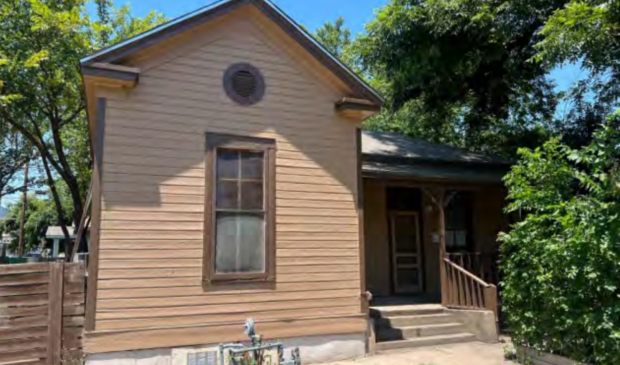Historic east side home may not get the votes needed to preserve it
Friday, May 3, 2024 by
Jo Clifton City Council surprised staff during Thursday’s zoning hearing when the vote to zone the Sinnigson House at 1100 E. Second St. as historic did not have the eight votes needed for final passage. The home was built in 1888.
Although the Historic Landmark Commission and the Planning Commission endorsed the idea of zoning the front part of the original structure as a good example of a Folk Victorian house that should be preserved, the owner did not agree. The back part of the house has been changed significantly and was not considered for historic zoning.
Members of the two commissions that voted in favor of zoning the house historic based their recommendations on the architecture as well as its historical associations with builder and carpenter Charles S. Sinnigson. Much of East Austin’s history has been lost due to neglect and the desire for redevelopment.
At Thursday’s Council meeting, real estate agent Joshua Brunsmann, representing the owner, told Council the house was not well enough preserved to justify keeping it. Speakers from Preservation Austin, as well as the city’s Historic Preservation Office, disagreed.
Kalan Contreras, senior planner with the city’s Historic Preservation Office, argued in favor of preservation but was clearly caught off guard when more than one Council member indicated she did not support the historic designation. Council Member Paige Ellis voted against the historic designation in January when the matter first came to Council. At that time she was the only “no” vote. However, on Thursday, Council Member Natasha Harper-Madison also said she wanted to vote no.
JuanRaymon Rubio, a member of the HLC, told Council he was speaking for himself, not for the commission. However, in expressing his request that Council zone the house historic, he was also expressing the views of the commission. He asked them to think about the needs of the community, as opposed to the needs of any individual.
Likewise, Meghan King, policy and outreach planner for Preservation Austin, told Council it was important to preserve the houses of working-class people like Sinnigson.
“Properties like this have housed Austin’s Black and brown residents for decades,” she said. If the city is failing to listen to its commissions and pay attention to its historical surveys, “then it is failing to steward our rapidly vanishing history, particularly in East Austin.”
In the wake of the passage of the preservation bonus, she said, a home like this is a perfect example of how in the Austin housing market of today a home like this could be preserved.
When Mayor Kirk Watson called for a vote, he was probably not surprised that Ellis voted no. As she explained, she always opposes a historic designation if the property owner is not in agreement. However, then Harper-Madison indicated that she would also vote no. Council Member Mackenzie Kelly then joined the opposition, so Watson had to stop and regroup. After some back and forth with the lawyer and zoning chief Joi Harden, he decided to move forward with second reading only, because that requires only six affirmative votes. Harper-Madison voted with the majority on the final vote, but it is not clear how she will vote on third reading, which requires eight votes.
The Austin Monitor’s work is made possible by donations from the community. Though our reporting covers donors from time to time, we are careful to keep business and editorial efforts separate while maintaining transparency. A complete list of donors is available here, and our code of ethics is explained here.
You're a community leader
And we’re honored you look to us for serious, in-depth news. You know a strong community needs local and dedicated watchdog reporting. We’re here for you and that won’t change. Now will you take the powerful next step and support our nonprofit news organization?








